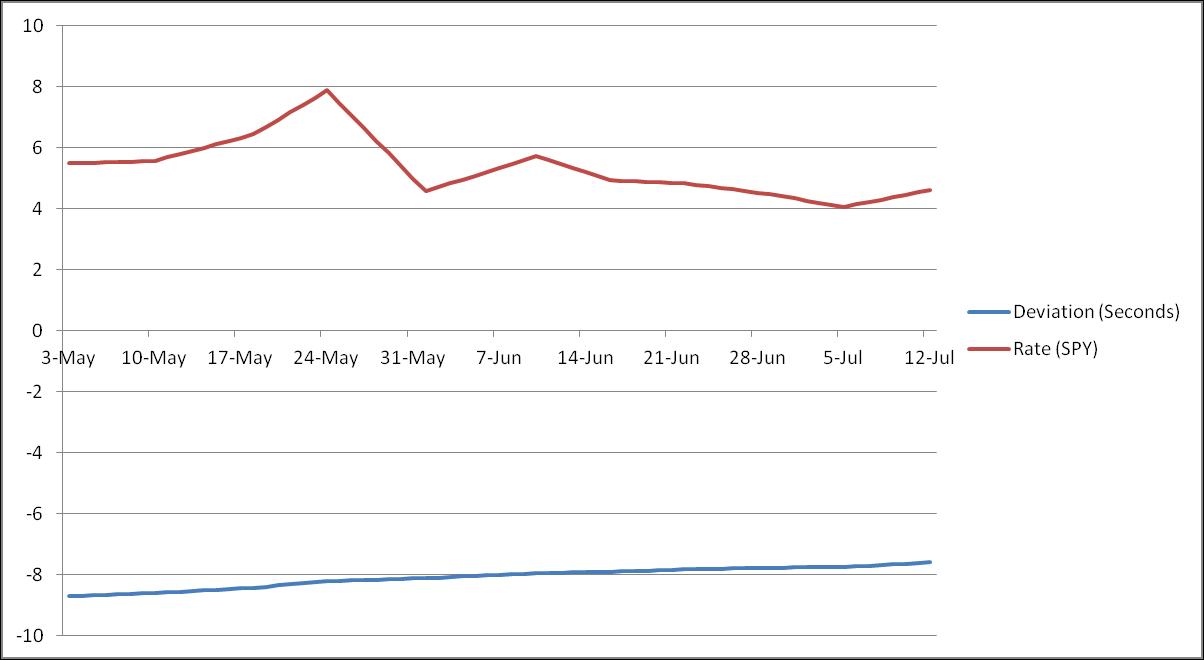
Citizen Exceed 1730
Timing Data
This watch has recently been thoroughly serviced and restored to clean and fully-functioning condition. The watchmaker who worked on it noted that he could not get the rate any better using the main trimmer and so I have been gently experimenting with the auxiliary trimmer since the watch came back to me. After a few weeks I was pleased to see an apparently steady rate of about 5.5 SPY emerge, but after a while the rate increased. This was no doubt partly due to the change in weather, but it got me wondering whether there was something else going on, as none of my other watches, save for the prototype Omega, has seen a rate change quite as dramatic as this for the same climatic conditions. Further fiddling with the auxiliary trimmer seems to have produced a better result, but only time will tell.
Results so far...
| Day | Deviation | SPY | Correction |
| 0 | -5.098 | 0 | |
| 3 | -5.85 | -91 | turned auxiliary regulator 1/8 anticlockwise |
| 7 | -6.654 | -73 | |
| 16 | -8.804 | -83 | turned auxiliary regulator 1/8 anticlockwise |
| 22 | -8.714 | 5.5 | |
| 29 | -8.606 | 5.5 | |
| 37 | -8.434 | 6.4 | |
| 43 | -8.222 | 7.8 | turned auxiliary regulator 1/16 clockwise |
| 51 | -8.122 | 4.5 | |
| 60 | -7.956 | 5.7 | |
| 66 | -7.912 | 4.9 | |
| 72 | -7.838 | 4.8 | |
| 79 | -7.782 | 4.4 | |
| 85 | -7.756 | 4 | |
| 92 | -7.604 | 4.6 |
Graph showing trends in deviation from Standard Time (in seconds) and rate (in seconds per year)

A Note on the Accuracy and Reliability of Timing Results
There is always going to be an unknown margin of error in any method of timing, and I estimate that each timing event could be off by as much as 0.1 second (though in practice I believe my results to be somewhat better than this). As a consequence of this potential margin of error, results over short periods of time are unreliable. Ultimately, the only result that matters is that which comes at the end of a full 365 days. Where interim results show consistent timings or steady trends, however, then it is safe to assume that those results are fairly accurate.